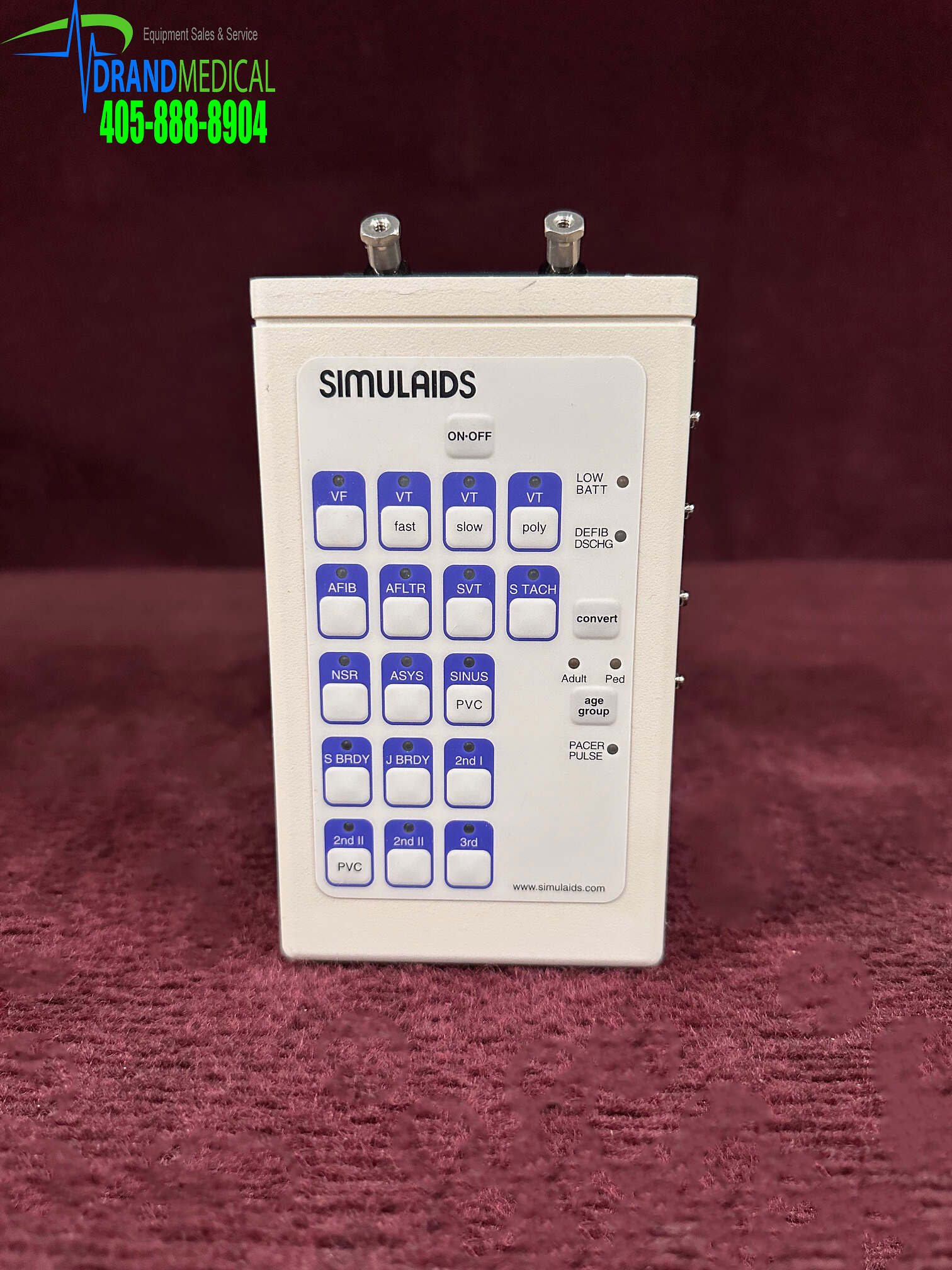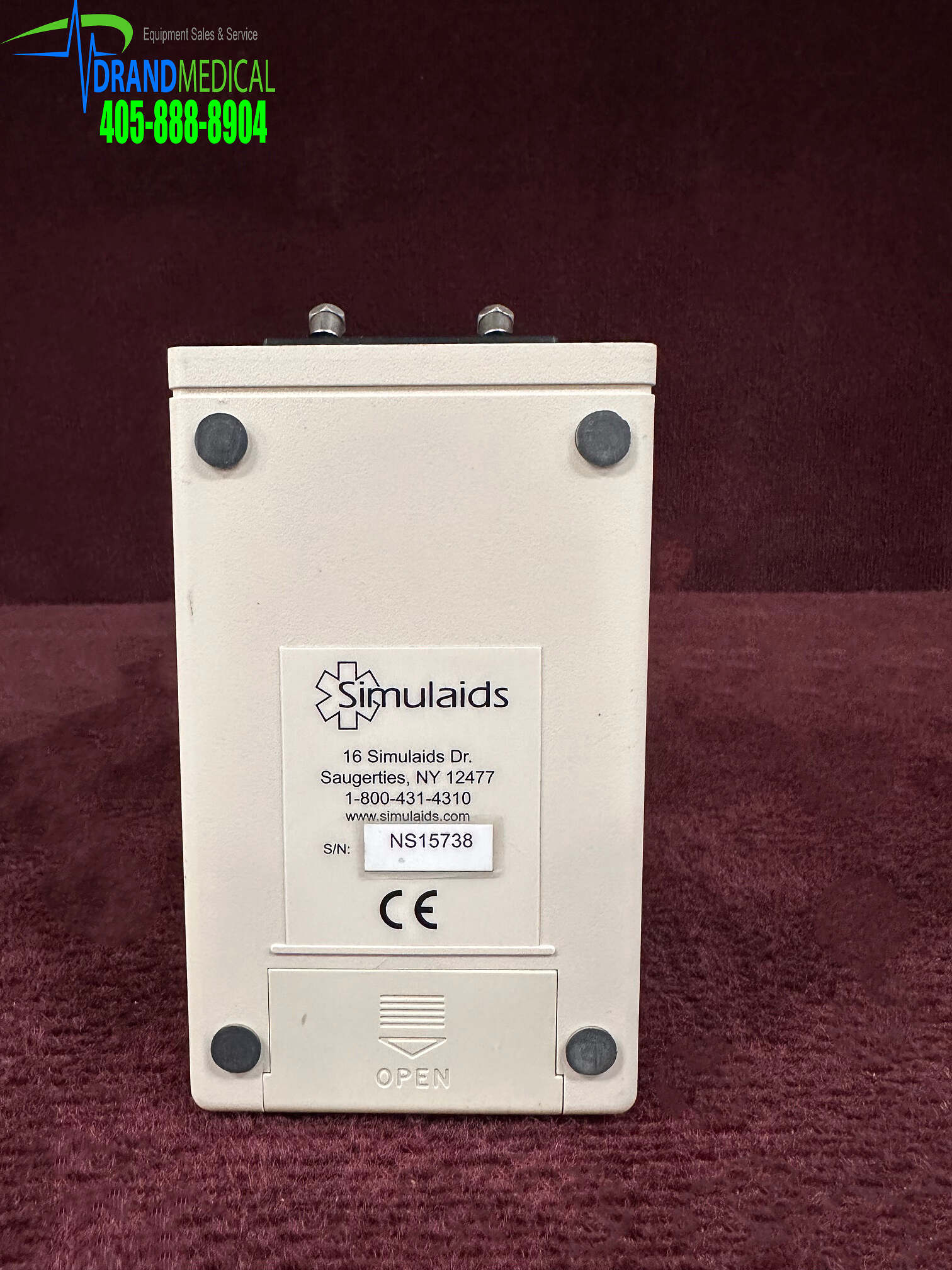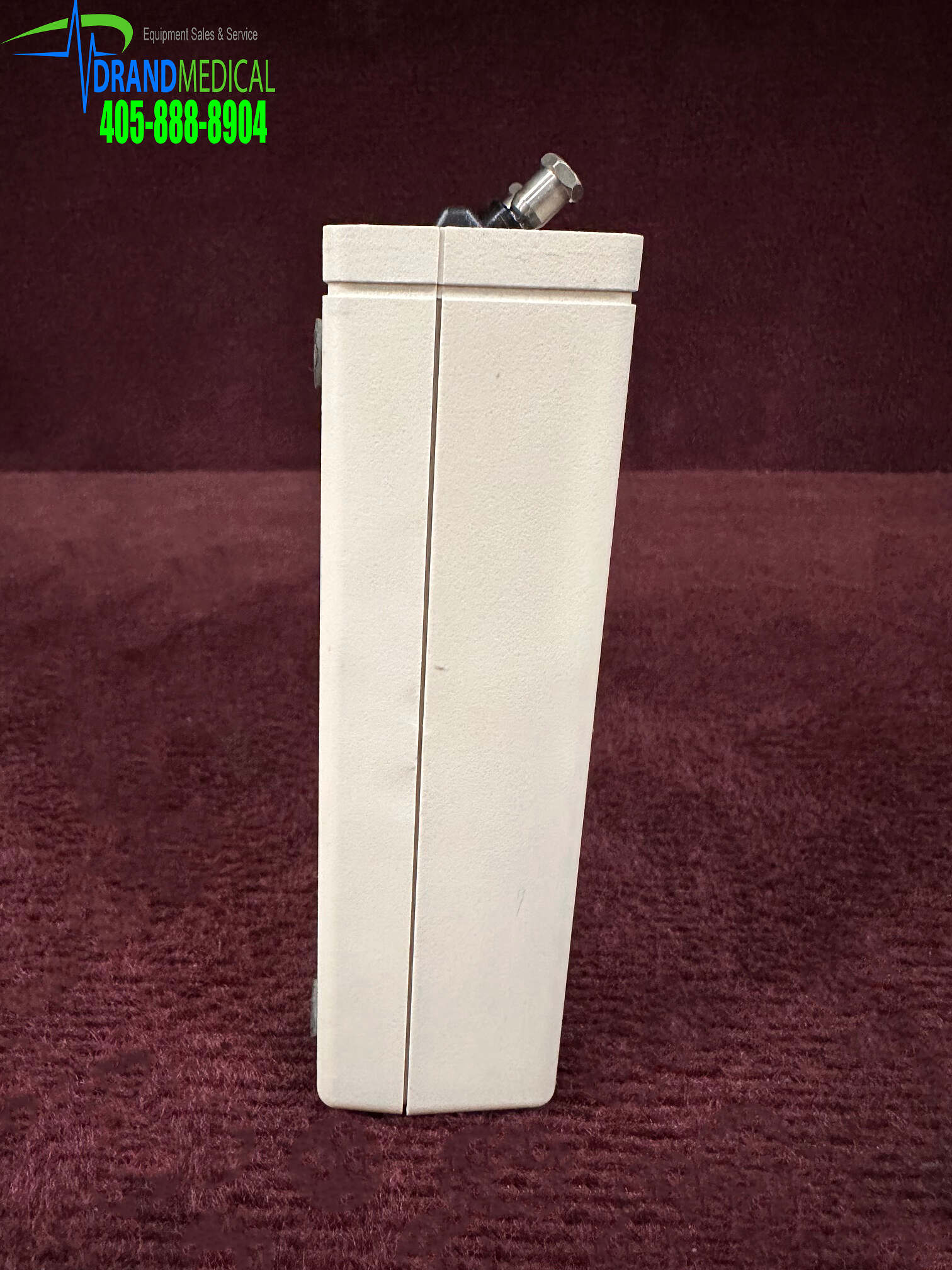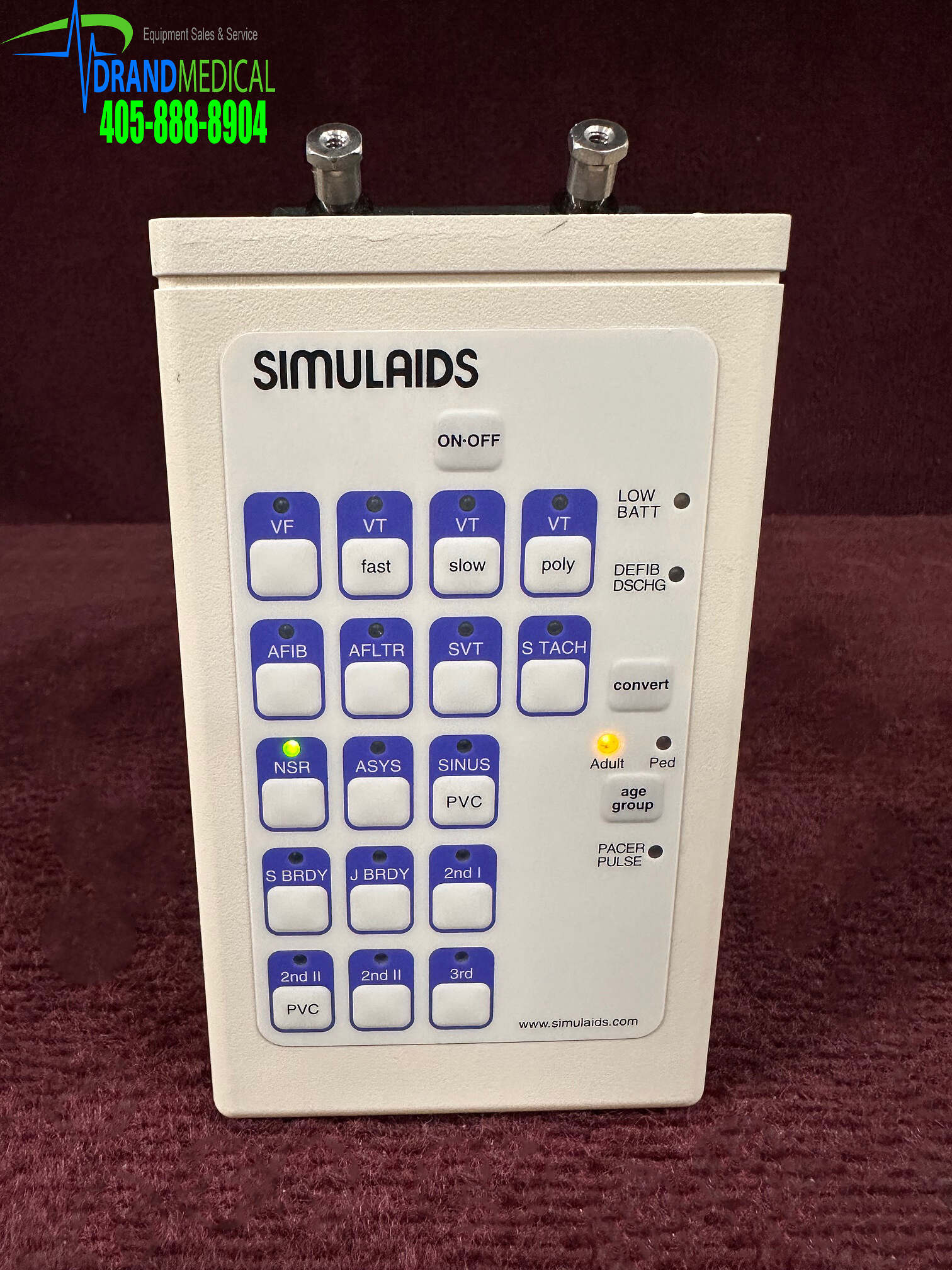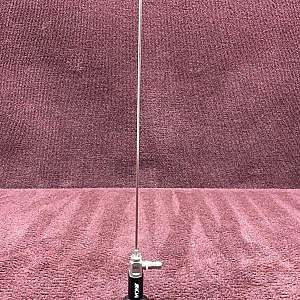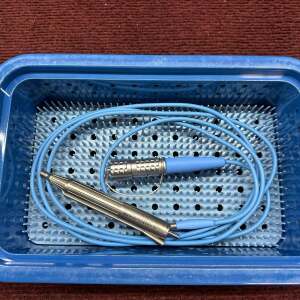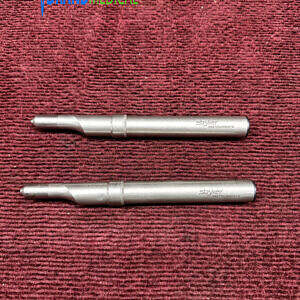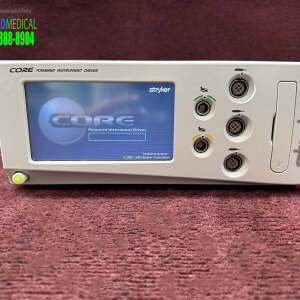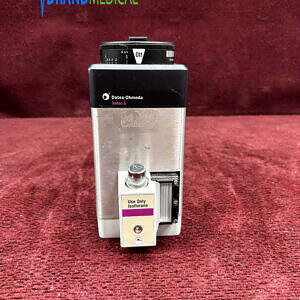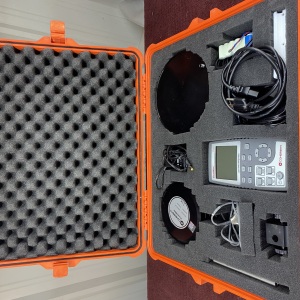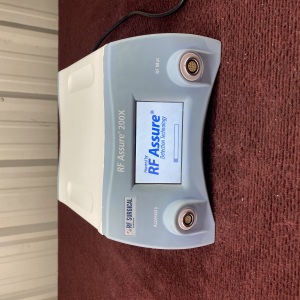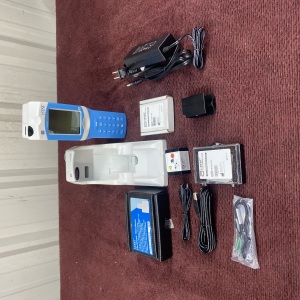Description
Introduction
Easy to use training tool that allows practice of defibrillation and pacing procedures with or without a defib manikin.
-
ON/OFF – Press to power on and off.
-
LOW BAT – Red indicator illuminates when battery needs replacement.
-
DEFIB DISCHG – Green indicator illuminates for two seconds when defib discharge is sensed. If defibrillating Nasco manikin, set defib to 2J or more. If defibrillating directly into ECG Simulator, set defib to 50J or more.
-
convert – Simulate cardioversion by activating convert feature. Simulator responds to defib discharge.
-
Adult Ped – Yellow indicators tell which rhythm set is being
-
simulated – adult or pediatric.
-
age group – Press to select adult or pediatric rhythm set.
-
PACER PULSE – Green indicator flashes when external pacer pulse is sensed. (Captured beat is simulated too). Sensing occurs when external pacer current set to 60mA – 70mA or more.
Convert
Allows conversion automatically from one running rhythm to another waiting rhythm when a defib discharge is sensed. Remember to set joules appropriately based on recommendations listed on previous page
To perform convert operation:
-
Press convert key. Indicator of running rhythm pulses brighter
-
Press key of rhythm to be simulated immediately after defib discharge. Indicator of this waiting rhythm blinks on and off.
-
Discharge defibrillator. The waiting rhythm becomes the running rhythm.
To cancel convert operation before it’s completed, either press the convert key again or press key of running rhythm. If convert operation is started, but a discharge is not sensed within two minutes, the convert operation cancels automatically.
Age group
Allows you to simulate either adult or pediatric rhythms. P wave amplitudes, PR intervals, QRS durations, QRS axes and ventricular rates are representative of the age group selected.
Adult and Ped indicators tell you which rhythm set is selected. To switch from one set of rhythms to the other, press age group key, then key of rhythm you wish to simulate. If age group key is pressed, but rhythm key is not pressed, the age group changes within two seconds. At power-on, adult age group is selected automatically.
Adult Defibrillation Training
-
VF Ventricular Fibrillation
-
VT fast Ventricular Tachycardia. Wide QRS. Rate: 185
-
VT slow Ventricular Tachycardia. Wide QRS. Rate: 140
-
VT poly Ventricular Tachycardia. Fluctuating QRS axis.
-
AFIB Atrial Fibrillation. Ventricular rate: 120-160
-
AFLTR Atrial Flutter (2:1). Ventricular rate: 150
-
SVT SVT alternates with NSR, then remains in SVT. SVT rate: 216
-
S TACH Sinus Tachycardia. Rate: 120
-
NSR Normal Sinus Rhythm. Rate: 72
-
ASYS Asystole
-
SINUS PVC Sinus Rhythm with PVCs. Sinus rate: 72
Adult External Pacer Training
-
S BRDY Sinus Bradycardia. Rate: 40
-
J BRDY Junctional Bradycardia. Rate: 42
-
2nd I 2nd deg. type I AV Block (4:3). Atrial rate: 60
-
2nd II PVC 2nd deg. type II AV Block (4:3). PVCs. Wide QRS. Atrial rate: 60
-
2nd II 2nd deg. type II AV Block (4:3). Wide QRS. Atrial rate: 60
-
3rd 3rd deg. AV Block. Wide QRS. Ventricular rate: 37
Pediatric Defibrillator Training
-
VF Ventricular Fibrillation
-
VT fast Ventricular Tachycardia. Wide QRS. Visible P wave. Rate: 180
-
VT slow Ventricular Tachycardia. Wide QRS. Rate: 148
-
VT poly Ventricular Tachycardia. Fluctuating QRS axis. Short runs.
-
AFIB Atrial Fibrillation. Small R waves. Ventricular rate: 135-160
-
AFLTR Atrial Flutter (2:1). Ventricular rate: 150
-
SVT Supraventricular Tachycardia. Inverted P follows QRS. Rate: 240
-
S TACH Sinus Tachycardia. Rate: 165 NSR Normal Sinus Rhythm. Rate: 90
-
ASYS Asystole
-
SINUS PVC Sinus Rhythm with PVCs. Sinus rate: 90
Pediatric External Pacer Training
-
S BRDY Sinus Bradycardia. Rate: 50
-
J BRDY Junctional Bradycardia. Rate: 60
-
2nd I 2nd deg. type I AV Block (5:4). Atrial rate: 60
-
2nd II PVC 2nd deg. type II AV Block (5:4) with PVCs. Atrial rate: 60
-
2nd II 2nd deg. type II AV Block (5:4). Atrial rate: 60
-
3rd 3rd deg. AV Block. Ventricular rate: 60
